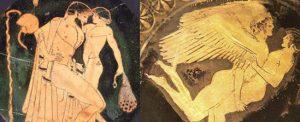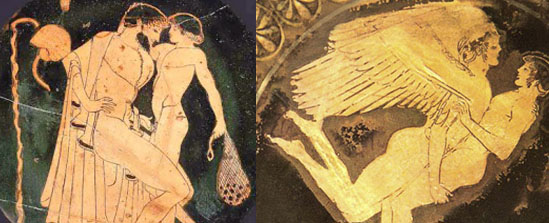
Over the next couple of weeks, we will be looking at the history of the world’s LGBTI movement down to how international events led to the start of all the global movements as they are known to date. However, to fully understand how the movement was established, it is essential to also focus on the other aspects that greatly contributed to its growth ie culture, society and literature, religion and art.
Like most revolutions in the world, the LGBTI movement dates back to 5000 BCE with some bold artists depicting sexuality in their works, in a way the world had never seen before. The Mesolithic rock art in Sicily depicted phallic male figures in pairs that were interpreted variously, including as hunters, acrobats, religious initiates and depictions of male intercourse. This was the first incidence for homosexuality to be openly discussed let lone put on public display.
The Neolithic and Bronze age also had drawings and figurines from the Mediterranean that showed a third se human figure with female breasts and male genitals or without distinguishing sex characteristics which is now mostly considered the world’s first intersex art sculptures.
In the centuries that followed, artists became bolder in their depiction of LGBTI related matters; wall paintings from Etruscan Tomb of the Bulls (Italy) depicted homosexual intercourse and the tomb’s name which is taken from a pair of bulls watching human sexual acts, one between a man and a woman and the other between two men, has also bought the argument that homosexuality long existed in society.
Sappho, a Greek lyric poet born on the island of Lesbos, was included in the list of nine lyric poets. She was famous for her lesbian themes, giving her name and that of her homeland to the very definition of lesbianism.
Plato then published Symposium in which Phaedrus, Eryixmachus, Aristophanes and other Greek intellectuals argue that love between males is the highest form, while sex with women is lustful and utilitarian. Socrates, however, differs as he demonstrates extreme self-control when seduced by the beautiful Alcibiades.
Plato followed this up with the publication of Laws in which the Athenian stranger and his companions criticize homosexuality as being lustful and wrong for society because it does not further the species and may lead to irresponsible citizenry. Between 90-80 BCE, Quintus was among a circle of poets who made short, light poems with both his surviving material addressing a male as an object of desire, signaling a new homoerotic aesthetic in Roman culture.
In the last BCED century, Catullus wrote the Carmina, including love poems to Juventius, boasting of sexual prowess with youth and violent invectives against “passive” homosexuals. Virgil also wrote the Eclogues , that included a notable example of homoerotic Latin literatureand Tibullus wrote his elegies, with references to homosexuality.
Later on, in the 1st Century CE, The Warren cup was made – this was a Roman silver drinking cup with two images of male same sex acts. The eruption of Mount Vesuvius buried the coastal resort of Pompeii, an incident that resulted into the collection of art pieces that included representations of male-male and female-female relations.
Nonnus’ Dionysiaca then became the last known piece of literature for nearly 1,000 years to celebrate homosexual passion These works of art and literature were later followed by a number of resistances (to be reviewed in the ensuing articles)with some extreme measures taken against homosexuality, a development that pushed the movement underground for a while.
It is such pressure that forced LGBTI identifying persons at the time to reorganize themselves and by the late eighteenth century, returned stronger and unfazed. Marcel Proust’s In Search of Lost Time published in France, marked the first time a modern Western author treats homosexuality openly in literature and Different from Others , one of the first explicitly gay films, was released.




